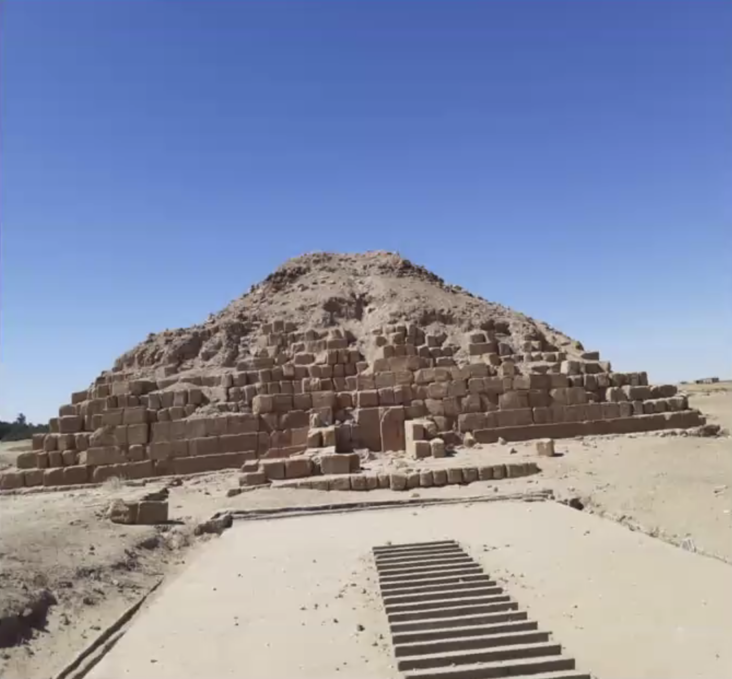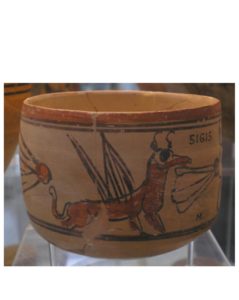Sharjah Archaeology Authority Organizes Virtual Lecture Highlighting Achievements Of Meroitic Civilization In Funerary Architecture

Sharjah Archaeology Authority(SAA), recently organized a virtual lecture titled,”The Sequence Of Burial Of The Kings Of Meroe In The Second Meroitic Pyramids Of Kush II.” The lecture was moderated by Dr Salah Hassan Matar Al-Akhaidir, Meroitic archaeology expert, lecturer at University of Niles and member of SAA and managed by Eisa Yousif, Director of the Excavation and Archaeological Sites and tangible heritage at SAA. Approximately 100 participants including students and those interested in learning about antiquities attended the lecture.
The lecture shed light on the burial of pyramids, as part of funerary architecture in Meroitic civilization. Sudan’s earlier names, found written in the ancient languages during the second Kush civilization were listed during the session.
Dr Hassan presented an overview of the Meroitic civilization, found in the writings of travelers and historians who talked about Meroe, also known as the “Second Kush,” and reviewed its locations on the map and its borders in all periods from the 8thcentury BC to the 4th century AD. He also presented the opinions of scholars regarding the naming of archaeological evidence.
“There is no doubt that the ancient Sudan’s cultural connection with the ancient Egyptian civilization in all its stages, whether ancient, middle or modern formed the bulk of the sources and evidence for four centuries,” he said.
He explained at length about construction and architectural style of the Cushitic pyramids, emphasizing on their entrances and burial rooms, their topographical distribution of sites and texts inside them. Also discussed, were the earlier procedures of burial in the pyramids of Kush and the development of a burial from a pile, to a mastaba, to a pyramid in the Kru cemetery, which is the first Royal Cemeteries in the Second Kush Civilization.
Hierarchical burials
The lecture also highlighted that the Kerma Kingdom from 2500 BCE to 1500 BCE, do not have hierarchical burials and the burial moved from the pyramid cemeteries of El-Kurru, to the pyramids of Nuri, then returned to the cemetery of Kru again. The burial was then moved to Jebel Barkal, then to the southern Al-Bajrawiya, before being moved to the northern Al-Bajrawiyaat Meroe and the western hierarchical cemetery in Al-Bajrawiya.
The developments that took place during the archaeological research in Sudan were also reviewed, based on the list compiled by American Archeologist, George Andrew Reisner, in the Royal Cemeteries in Kush. The book included opinions from several archaeologists including Fritz Hintze, Laming Macadam, and others. These researchers provided a comprehensive overview of the most important burials, pottery, coffins, and treasures found.
Burial of the Kings of Meroe
During the lecture, the map of Meroitic Kushite civilization, were referred as “Meroe,” ‘Karnoub,’ ‘Jebel Mawia,’“the second cataract,” “Karma,” “Al-Barka,” and “Nuri,” were also addressed. The researchers also asserted that striking differences were found. As for the archaeological sites, however, recent excavations and evidence have proven that ‘Napata’ was the religious center whereas ‘Meroe,’ was the political center between the 2nd and 4th centuries AD.
Sudan’s names in archaeological sources
The lecturers listed the names of Sudan in archaeological sources such as ‘Ta-Siti’called the land of the arc, ‘Ta-Nahasi,’called the land of al-Nahasi and ‘Ta-Khenti’called the land of Khunta.
Sudan also known as ‘Kush,’ is derived from the Meroitic civilization, studied by researchers. Ethiopia, on the other hand is a name given by Greeks to the southern region of Egypt, its use diminished with the passage of time after the Arabs started calling the area Sudan.
Kingdom of vine
The Karma civilization is the “First Kush” that preceded the period of the Meroe civilization, and is considered one of the greatest civilizations in the African continent, built on a clay structure. The civilization flourished remarkably in the waterfall area, and the most prominent monuments discovered in that region, were impregnable forts, houses and cemeteries and were considered a cultural and commercial meeting point between Egypt and other countries that were cooperating with in matters regarding trade.
Burials in the Kerma Kingdom, were done linearly by placing the dead in a squatting position, in addition to the sacrifices that were placed with him in the grave according to what the excavations showed at the burial, so their servants were buried with them while they were alive, in addition to placing pottery, food and drinks And the heads of cows.
Ancestral burials in El-Kurru, before the pyramidal burial
Burial of kings in the pyramids was inspired by the burial culture in the Egyptian Kingdom. Priorto this kind of burial being adopted, people were buried in an earthy pile or a flat land and much later they were started to be buried in the “Mastaba”.The burial was influenced by the ancient Egyptian culture, heading east.
Advantages of the Kushite pyramids
Dr Hassan discussed about the advantages of the Kushite pyramids represented in the “funerary compartment,” containing important historical information about the buried king, which provided scholars with the opportunityto better understand the Meroitic period. The Kushite pyramid was built unlike the piers in Egypt, as well as the “supplications from the Book of the Dead in the Funerary Shrine,” which did not significantly contradict those found in the civilization of Lower Egypt.
Pyramids of Nuri
The burial, was later moved to the area of Nuri, which is not far from the El-Kurru area, and the most prominent pyramids discovered included the ‘Taharqa’ and ‘Aspelta.’The quality of rocks used in these pyramids were relatively poor than those used in the construction of the pyramids in Meroe. Others pyramids found here are the ‘Barkal’ and ‘Al Shamalia,’ known for their golden exteriors.
Sharjah Archaeology Authority provides a platform to learn about the various aspects regarding the preservation of the local archaeological and heritage components, to align with the values and stature of the Emirate of Sharjah. They constantly apply a systematic work approach, in accordance with the latest international practices and pioneering standards, to ensure sustainability in preserving archaeological heritage for future generations to know.


